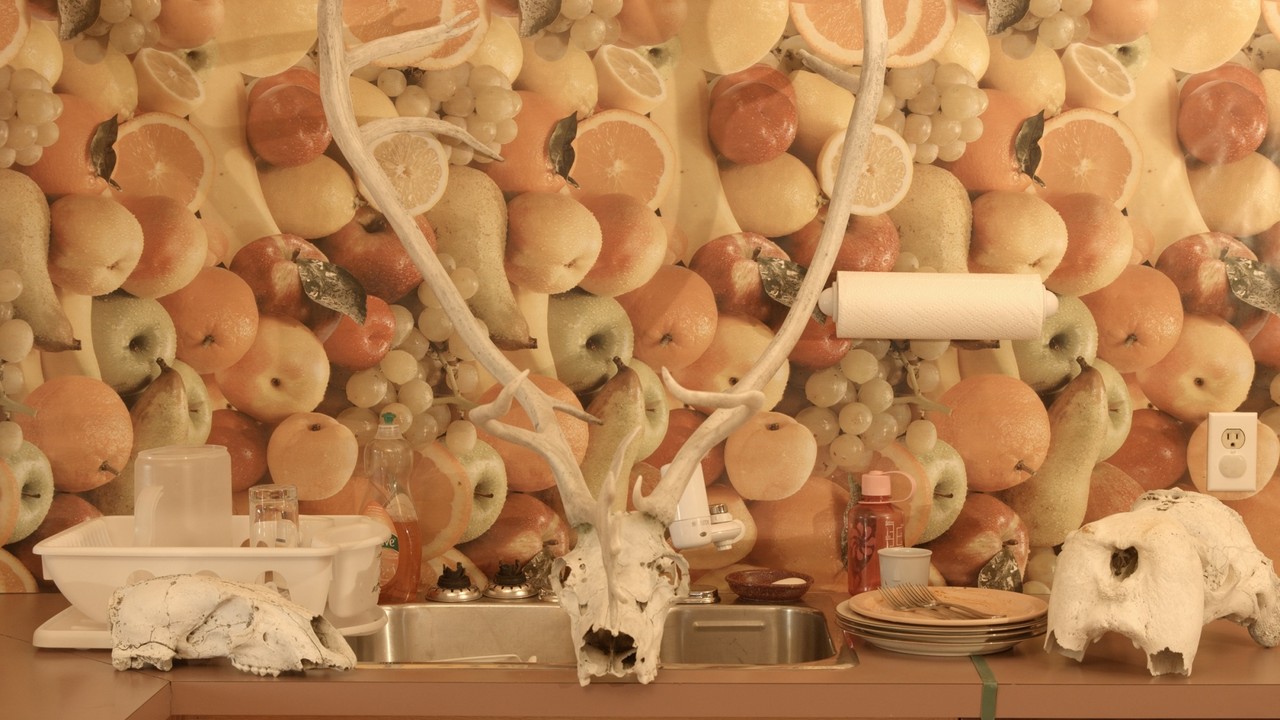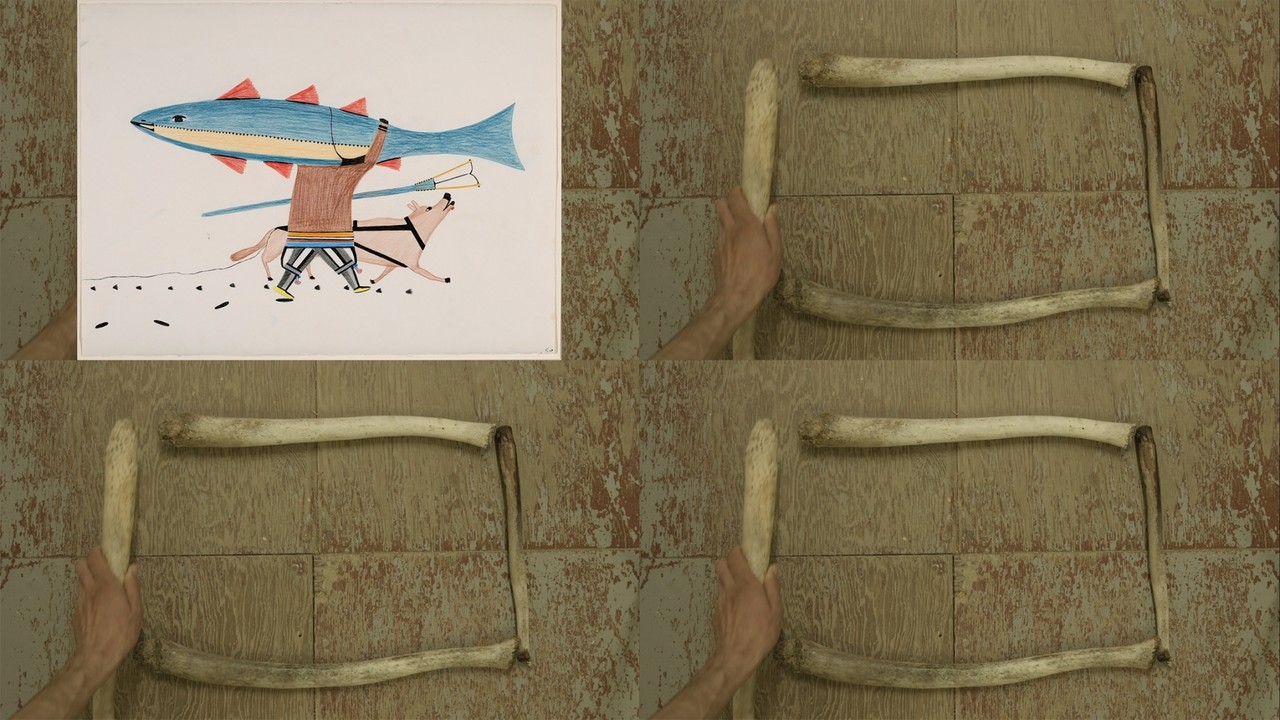Carte blanche to Stéphanie Cottin (CaroSposo)
Arvo Leo, Fish Plane, Heart Clock, 2014
31 Oct - 17 Dec 2017
CARTE BLANCHE TO STÉPHANIE COTTIN (CAROSPOSO)
Arvo Leo, Fish Plane, Heart Clock, 2014
HD video, colour, sound ; 60 min
(screening every hour)
31 October - 17 December 2017
It’s a story of how a harpoon transformed into a pencil, and with it, everything else. Arvo Leo (born in 1984, Canada) centered his 2014 film Fish Plane, Heart Clock on Inuit artist Pudlo Pudlat (1916-1992) — positioning Pudlat’s pencil as a fulcrum around which a much wider context accrues.
Originally living as a hunter on Baffin Island in the Canadian Arctic, an injury led Pudlat to relocate to Kinngait, a colonial settlement. In 1956, Canada’s Department of Northern Affairs and Natural Resources set up Kinngait Studios, to provide Inuit with space, materials, and instruction for drawing and printmaking. The West Baffin Eskimo Co-operative followed in 1959, to promote sales and exhibitions of Inuit art in southern Canada and internationally. Pudlat’s imagery reflects his rapidly changing environment, combining animals or igloos with airplanes or helicopters, and often morphing one into the other.
Working prolifically in the Studio, Pudlat’s prints and sculptures were distributed widely by the Co-Operative. Yet in Fish Plane, Heart Clock, Leo focuses on Pudlat’s largely unknown collection of over 4,000 drawings and paintings — the more private side of an artistic output spanning four decades. Music performed by Cape Dorset residents adds another layer, and is as present as the image.
Fish Plane, Heart Clock is more demonstrative and lyrical than documentary or neutral, as Leo interpretatively parrots Pudlat’s artistic logic and visionary form of graphic oration. Leo sees his film as an attempt not to speak ’about’ Pudlat, but to speak ’nearby’ Pudlat. In other words, the proximity Leo provides is a seat at the center of an orbit, from which both an unseen collection of art and a constellation of cultural, economic, and political relations come into focus.
Arvo Leo, Fish Plane, Heart Clock, 2014
HD video, colour, sound ; 60 min
(screening every hour)
31 October - 17 December 2017
It’s a story of how a harpoon transformed into a pencil, and with it, everything else. Arvo Leo (born in 1984, Canada) centered his 2014 film Fish Plane, Heart Clock on Inuit artist Pudlo Pudlat (1916-1992) — positioning Pudlat’s pencil as a fulcrum around which a much wider context accrues.
Originally living as a hunter on Baffin Island in the Canadian Arctic, an injury led Pudlat to relocate to Kinngait, a colonial settlement. In 1956, Canada’s Department of Northern Affairs and Natural Resources set up Kinngait Studios, to provide Inuit with space, materials, and instruction for drawing and printmaking. The West Baffin Eskimo Co-operative followed in 1959, to promote sales and exhibitions of Inuit art in southern Canada and internationally. Pudlat’s imagery reflects his rapidly changing environment, combining animals or igloos with airplanes or helicopters, and often morphing one into the other.
Working prolifically in the Studio, Pudlat’s prints and sculptures were distributed widely by the Co-Operative. Yet in Fish Plane, Heart Clock, Leo focuses on Pudlat’s largely unknown collection of over 4,000 drawings and paintings — the more private side of an artistic output spanning four decades. Music performed by Cape Dorset residents adds another layer, and is as present as the image.
Fish Plane, Heart Clock is more demonstrative and lyrical than documentary or neutral, as Leo interpretatively parrots Pudlat’s artistic logic and visionary form of graphic oration. Leo sees his film as an attempt not to speak ’about’ Pudlat, but to speak ’nearby’ Pudlat. In other words, the proximity Leo provides is a seat at the center of an orbit, from which both an unseen collection of art and a constellation of cultural, economic, and political relations come into focus.


